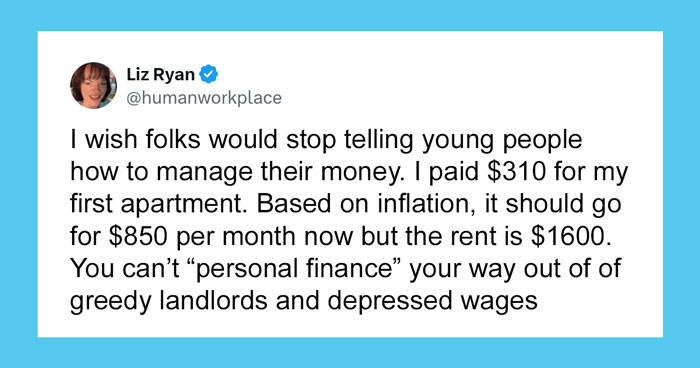
Experts Reveal What You Should And Shouldn’t Do In A Hurricane After A Lot Of Bad Ideas Go Viral
Interview With ExpertHurricane Milton landed in the Tampa Bay area of Florida yesterday (October 10).
While authorities expressed relief at the fact that the storm impacted as a Category 3 rather than a catastrophic Category 5, the winds were nevertheless able to claim the lives of 15 people at the time of writing and leave several more economically vulnerable.
- Hurricane Milton hit Tampa Bay as a Category 3 storm, claiming 15 lives.
- Experts stress following official instructions during hurricanes.
- Community resilience seen in Florida as nearly 1,000 people rescued.
- Viral bad ideas could promote risky behavior during crises, experts warn.
Bored Panda spoke with two seasoned disaster management experts who provided their exclusive analysis of the event, including their recommendations for citizens to overcome upcoming challenges.
“A storm is only the beginning,” explained Professor Michel De L’Herbe. “Rescue efforts, removing wreckage, and addressing the losses of those most affected are the most difficult aspects.”
“The priority is always to follow official instructions from authorities and stay informed,” added Camilo Prats, a risk reduction expert with nine years of experience working for the United Nations.
Experts revealed what people should and shouldn’t do during a hurricane and shared their recommendations for facing the challenges ahead
Image credits: Joe Raedle/Getty Images
In the hours before this piece was written, Florida announced that nearly 1,000 people had been rescued, along with more than 105 animals.
For De L’Herbe, the coordination displayed by the state’s inhabitants was remarkable.
“Floridians have been an example of resilience during this crisis. Any expert in the field will stress how important it is to listen to authorities and trust in your community,” De L’Herbe explained.
“This is why programs such as the Community Emergency Response Team (CERT) are so important.”
Image credits: PHILIPPE SERRAND (not the actual photo)
Prats agreed, pointing out the importance of people knowing each other due to the different needs presented by each individual regarding medication, food, disabilities, mobility issues, and other conditions that require special attention.
“It’s also important to notify authorities in advance if there are any family members or neighbors with special needs, mobility issues, or who rely on electrical devices,” Prats added.
Florida was vulnerable as Hurricane Helene left debris that had to be removed quickly so they wouldn’t turn into deadly projectiles due to Milton’s strong winds
Image credits: WKYC Channel 3
The experts emphasized the importance of clearing debris ahead of a major hurricane. For example, in the case of Hurricane Milton, Florida had been hit by Hurricane Helene just over a week prior, which made debris removal efforts a top priority.
“During a storm, especially one as intense as Milton, any leftover debris can quickly become a deadly projectile, adding to their already destructive power,” De L’Herbe stated.
Flying elements gain lethality during mass movements, such as evacuation efforts, often leading to traffic jams and leaving people exposed for long periods.
Image credits: kricketfelt
“Those processes carry their own risks already,” Prats added. “Mass evacuations can lead to significant traffic congestion, so identifying the shortest and safest routes is critical.”
To reduce their time spent in the open, Prats urges people to review the government-provided list of safe zones and shelters and to consider heading to them as soon as possible with supplies.
Families should always have an emergency kit with 72 hours’ worth of supplies, including those needed to take care of their pets
Image credits: mattfromhornblasters.com
Prats mentioned some of the essentials, such as “water, non-perishable food, medications, flashlights, charged phones, radios for updates, a first-aid kit, important identification documents, insurance policies, and cash.”
Moreover, De L’Herbe mentioned the “72-hour rule,” which states that during crisis situations, people should always be equipped with essential supplies to survive independently for at least three days.
Image credits: FHPTampa
“For families with pets, there are shelters that are pet-friendly. Families should take the suffering of their animals into account and do everything possible to ensure they are safe,” the professor added.
Prats seconded this, explaining that keeping pets identifiable through collars and microchips is also essential.
A large number of “bad ideas” went viral just moments before the storm, promoting methods that experts quickly dismissed
Image credits: BN9
Several viral stories broke through before and after the hurricane, with some citizens even securing their roofs with ratchet straps.
“A strap like that can secure the roof, but it will not protect the house’s walls or windows,” De L’Herbe explained. “Sadly, that method is useless in the face of a Category 5 hurricane.”
Prats, on the other hand, considered the measure useful but stressed that it must be implemented alongside the securing of windows and the clearing of debris from outdoor spaces.
Image credits: morganroos96
Another notorious video was posted by a woman who assured her TikTok viewers that she would endure the storm in her high-rise apartment, refusing the government’s calls for evacuation.
“Higher floors are more exposed to strong winds. If there’s an evacuation order, it’s important to follow it,” Prats reiterated.
“Buildings can experience power outages, which can complicate the situation for people with limited mobility on upper floors,” he added.
De L’Herbe strongly agreed, explaining that evacuating from a high-rise building is much more difficult and that electric malfunctions can result in fires that can trap residents inside.
The attention brought to these viral clips could do more harm than good, both specialists said, as people are especially vulnerable to miscommunication during a crisis
Image credits: lieutenant_dan01
Other widespread stories, such as the now infamous “Lieutenant Dan,” a man who decided to brave the storm inside his boat, and that of a kayaking champion who helped people with his canoe during Hurricane Helene, were extensively covered by media outlets.
For the experts, the attention these stories attract, even if interesting, could do more harm than good.
“Promoting stories like these may encourage risky behavior,” Prats argued. “It’s important that mainstream media outlets are aligned with and focused on disseminating official information during these events.”
Image credits: gucci_lemon_reloaded
De L’Herbe, however, was more severe in his assessment.
“It’s irresponsible. We must not romanticize the emergency,” he stated. “While these anecdotes might be fun, they are directly related to ultimately individualistic attitudes.”
“If anything happens to these people, rescue teams will have to put their lives on the line to help them, not to mention using resources that could’ve gone to citizens who did follow instructions.”
According to the experts, while some videos might’ve gone viral for all the wrong reasons, they ultimately lauded the behavior of Florida’s citizens
Image credits: micheldelherbe
Image credits: e2biz
“This hurricane reinforces the idea that communities can respond appropriately,” De L’Herbe stated, noting that the way Floridians faced Hurricane Milton will serve as an example for the future.
As of this writing, the National Coast Guard has reopened some of the ports in Florida, Georgia, and South Carolina, facilitating the work of emergency responders and paving the way for recovery.
Professor Michel De L’Herbe is an Emergency Management Consultant. Nowadays, he operates his firm, MGMT.
Camilo Prats worked for the United Nations from 2015 to 2023. He currently serves as Project Lead at E2BIZ.
Image credits: chikfromthebrix
Image credits: NonsenseEnd
Image credits: Rupenzal6
Image credits: saifullahmunaw
Image credits: fadi_globally
Poll Question
Thanks! Check out the results:
I am trying to find how A. did the car stay dry in the bag? B. did the "hurricane-proof house" weather the storm? C. Did the woman in the high-rise survive?
I think a lot of people have misunderstood the house with the straps going over the roof. Building code specifies that the roof rafters meet minimum specifications when it comes to lifting forces . That code has evolved over the years. Current code mandates rafter ties, and reinforcement between the top plate of the wall and the foundation (200lbs uplift resistance for 24" OC construction). If you have an older home which you know lacks these features, taking steps to achieve them is quite reasonable. Assuming the house is ~50' wide and lacks rafter ties, adding 10400lbs of uplift resistance would help your structure survive high winds better. 50'/24"+1 for the end * 2 ends = 10400lbs/6 straps = 1733lbs each. This is well within the limits of heavy nylon straps. How much extra protection it might afford is questionable, but the basic math shows that it certainly can help.
Load More Replies...I hope they update the story of that poor dog tied to a fence. It was rescued and I hope the total-waste-of-air who tied him up will be found + charged with animal cruelty. (probably not soon, but eventually.)
All I can tell you is the dog is healthy, happy, and in foster care and that since it wasn't chipped, they haven't been able to trace it to an owner. No excuse for this. I'm a Florida resident and lived through this hurricane myself. There were tons of pet friendly shelters set up for this storm.
Load More Replies...That Lieutenant Dan in the sailboat is a grifter. He has about 16 mug shots for a variety of crimes and has raised about $40K from a GoFundMe or something to "save his life." Complete criminal.
I am trying to find how A. did the car stay dry in the bag? B. did the "hurricane-proof house" weather the storm? C. Did the woman in the high-rise survive?
I think a lot of people have misunderstood the house with the straps going over the roof. Building code specifies that the roof rafters meet minimum specifications when it comes to lifting forces . That code has evolved over the years. Current code mandates rafter ties, and reinforcement between the top plate of the wall and the foundation (200lbs uplift resistance for 24" OC construction). If you have an older home which you know lacks these features, taking steps to achieve them is quite reasonable. Assuming the house is ~50' wide and lacks rafter ties, adding 10400lbs of uplift resistance would help your structure survive high winds better. 50'/24"+1 for the end * 2 ends = 10400lbs/6 straps = 1733lbs each. This is well within the limits of heavy nylon straps. How much extra protection it might afford is questionable, but the basic math shows that it certainly can help.
Load More Replies...I hope they update the story of that poor dog tied to a fence. It was rescued and I hope the total-waste-of-air who tied him up will be found + charged with animal cruelty. (probably not soon, but eventually.)
All I can tell you is the dog is healthy, happy, and in foster care and that since it wasn't chipped, they haven't been able to trace it to an owner. No excuse for this. I'm a Florida resident and lived through this hurricane myself. There were tons of pet friendly shelters set up for this storm.
Load More Replies...That Lieutenant Dan in the sailboat is a grifter. He has about 16 mug shots for a variety of crimes and has raised about $40K from a GoFundMe or something to "save his life." Complete criminal.

 Dark Mode
Dark Mode 

 No fees, cancel anytime
No fees, cancel anytime 






















































32
14